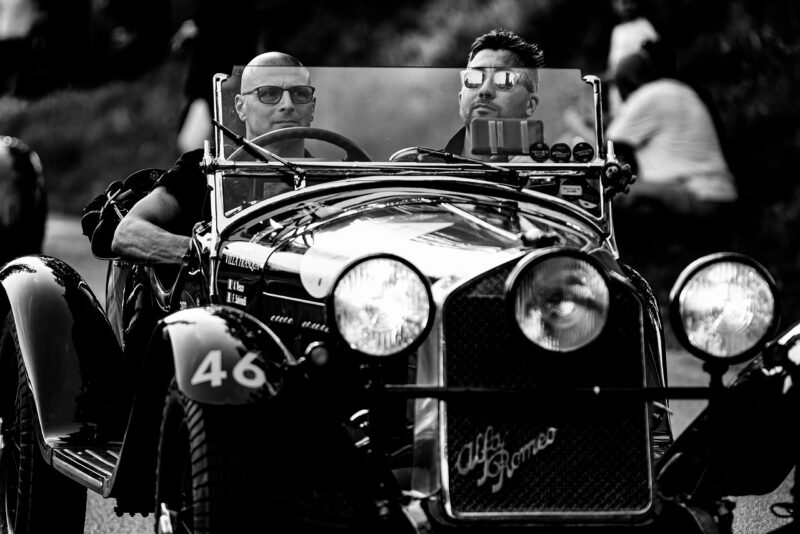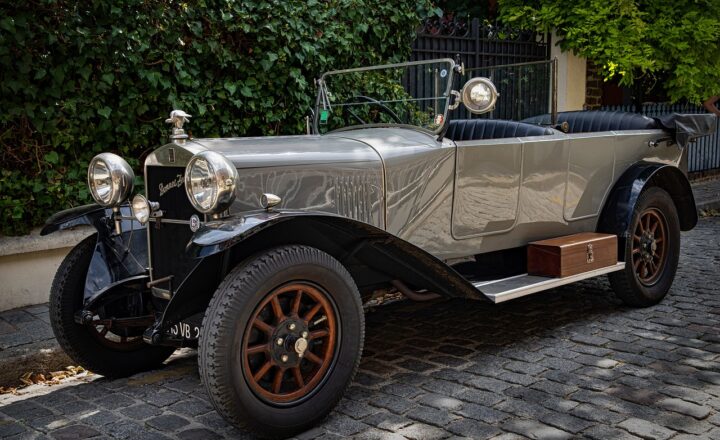How to Find and Restore Vintage Cars as a Fun and Fulfilling Hobby
November 13, 2024

Restoring vintage cars is more than just a hobby; it’s a rewarding journey that combines passion, artistry, and mechanical skill. For enthusiasts, the thrill of bringing an old classic back to life often translates into a lifelong obsession. Whether you’re a seasoned mechanic or a complete novice, anyone can delve into the art of car restoration. In this article, we’ll explore how to find vintage cars, the restoration process, and tips to ensure your journey is as enjoyable as it is fulfilling.
1. The Allure of Vintage Cars
The beauty of vintage cars lies not only in their aesthetic appeal but also in the history they carry. Each vehicle tells a story, representing a specific era of design and innovation. The allure often stems from:
- Nostalgia: Cars from the past evoke fond memories and a sense of connection to history.
- Unique Design: From the curves of a 1950s Cadillac to the sleek lines of a 1960s Mustang, each classic car has a distinct personality.
- Craftsmanship: Vintage cars often feature handmade elements that highlight the skill of past craftsmen, as opposed to mass-produced vehicles today.
Restoration melds appreciation with hands-on work, making it a fulfilling endeavor that brings joy to many.
2. Finding the Right Vintage Car
Whether you want to restore a car for personal enjoyment, investment, or both, finding the right vintage car is crucial. Here are several places to search for your next project:
- Classic Car Shows: These events often have cars for sale and allow you to network with enthusiasts and collectors.
- Online Auctions and Marketplaces: Websites like eBay Motors, Hemmings, and Bring a Trailer showcase a wide variety of vintage cars. Always check the seller’s reputation and vehicle history reports before purchasing.
- Local Car Clubs: Joining a car club can connect you with members looking to sell their projects, or they may lead you to local offers.
- Classified Ads: Check local newspapers and online classified platforms like Craigslist. Be cautious and do proper research on listings to avoid scams.
- Barn Finds: Some of the best restorations come from cars that have been sitting in barns or garages for decades. Networking and word-of-mouth can lead you to hidden treasures not listed online.
Once you’ve located potential cars, consider the following factors before making a purchase:
- Condition: Assess the level of wear and tear, rust, and whether parts are available for replacement.
- Documentation: Verify the vehicle’s history, title, and past restorations to understand its value and authenticity.
- Budget: Evaluate the total costs involved, including purchase price, restoration, and maintenance.
Finding the right car is an exciting step in your restoration journey—it sets the stage for the creative process ahead.
3. The Restoration Process: A Step-by-Step Guide
Restoring a vintage car is a multi-step process. While every car will have its unique challenges, the general steps include:
Step 1: Assessment and Planning
Before launching into restoration, you need a clear understanding of what you’re getting into.
- Inspect the vehicle thoroughly and create a checklist of all repairs needed.
- Set a realistic timeline and goal for completion, factoring in your knowledge and resources.
- Create a budget that includes tools, parts, and potential unforeseen expenses.
Step 2: Disassembly
This phase allows you to see the car in a new light by stripping it down to its core components, which may include:
- Removing body panels, seats, and engine components for cleaning or replacement.
- Taking pictures during disassembly to help with reassembly later on.
- Labeling parts and organizing hardware to prevent loss.
Step 3: Repairs and Replacements
This stage often requires the most mechanical skill and creativity. Common repairs can include:
- Bodywork: Fixing rust damage, dents, and repainting.
- Engine repairs: Addressing mechanical issues or replacing outdated parts.
- Electrical work: Updating electrical systems or adding modern elements while preserving original aesthetics.
Step 4: Reassembly
You’re one step closer to your masterpiece. Following your earlier notes and pictures, carefully reassemble the vehicle.
- Ensure all parts fit correctly and are fastened securely.
- Take your time to avoid stress and rework.
Step 5: Final Touches
Once the car is reassembled, focus on:
- Cleaning, polishing, and detailing to boost visual aesthetics.
- Adding personalized touches, such as custom upholstery or decals.
- Conducting safety checks and test driving the vehicle to ensure reliability.
4. Tips for a Successful Restoration
The restoration process can be lengthy and complex. Here are some tips to keep your experience positive:
- Educate Yourself: Invest time in learning about your specific vehicle model. Join forums and watch how-to videos that can guide you through tricky repairs.
- Network with Other Enthusiasts: Connect with fellow car lovers who can offer insights, assistance, and even part exchanges.
- Be Patient: Restoration takes time. Celebrate small victories, and don’t rush the process.
- Have Fun: Enjoy every step of the journey! The process of restoration is as meaningful as the finished product.
5. Conclusion: Embracing the Vintage Car Culture
Restoring vintage cars provides a unique opportunity to blend art, history, and craft. It’s not just about the end result; it’s also about the experiences, lessons, and friendships formed along the way. By finding the right car and following a measured restoration process, you’ll gain a deeper appreciation for automotive history while cultivating a skillset that spans decades.
So why wait? Grab your tools, find that vintage gem, and embark on a fulfilling journey that promises not just a beautiful car but a trove of cherished memories and experiences as well.
Happy restoring!






